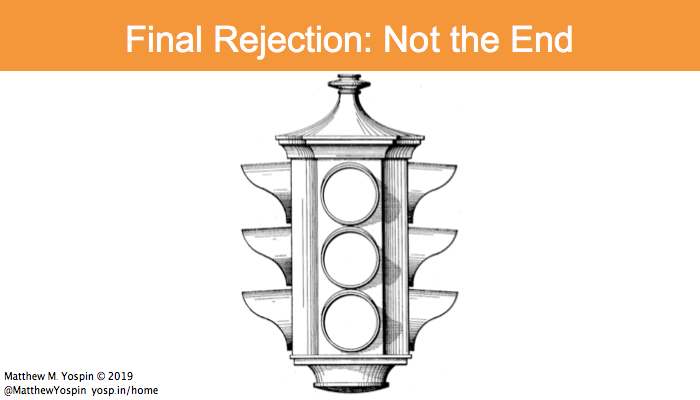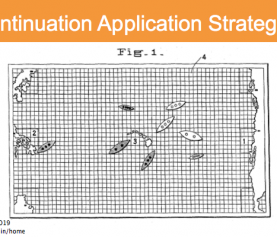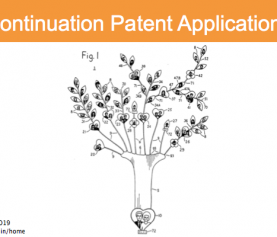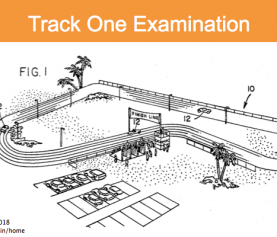Final rejection: not the end
When you’ve applied for a patent, your patent application will often get a final rejection. This is a misleading term: it is the second rejection in the course of patent prosecution, after a non-final rejection, but a final rejection is not the end of the road for your patent application. There are several options available for your patent application after your receive a final rejection.
Options after final rejection
At present, these are your options after receiving a final rejection in a patent application:
- Request for Continued Examination
- Amendment After Final
- After Final Consideration Pilot 2.0
- Appeal to the USPTO’s Patent Trial & Appeal Board
- File a Pre-Appeal Brief Request for Review with a Notice of Appeal
- File a Continuation Application or a Continuation-in-Part Application
Request for Continued Examination after a final rejection
A Request for Continued Examination (RCE) will re-open prosecution of the patent application. The patent examiner will review the patent application, considering the claim amendments and/or arguments against the rejections (from the final Office Action) in a Preliminary Amendment that you file with the RCE. An RCE and Preliminary Amendment are a strategic choice for many patent applications that have received final rejections. Note that an RCE can be expensive: in addition to attorney’s fees, the USPTO currently charges the following fees for a first RCE and any subsequent RCEs in a patent application.
USPTO RCE filing fees
| Type of fee | Large Entity | Small Entity | Micro Entity |
|---|---|---|---|
| First RCE | $1,300 | $650 | $325 |
| Second and later RCEs | $1,900 | $950 | $475 |
Please see my posts on applicant entity status and USPTO filing fees for related information. After filing an RCE, prosecution of the patent application is re-opened, and the applicant should expect that it could be months or longer before receiving a first Office Action in the re-opened application.
Amendment After Final Rejection
An amendment in a patent application may be entered after a final rejection, as an Amendment After Final (AAF). Because examiners have a short amount of time to consider the changes made with the AAF, these are generally worthwhile only when the claim amendments or arguments are simple, such as resolving issues with the form of claims. AAF filings do not require USPTO fees.
Because of the strict timeframes involved in AAF filings, filing an AAF can end the opportunity for the patent applicant to file a RCE and keep patent prosecution open. An AAF should only be used in limited circumstances. More information is at the USPTO’s website.
After Final Consideration Pilot 2.0
Since 2013, the USPTO has been running a pilot program called the After Final Consideration Pilot 2.0 (AFCP) program (see the USPTO’s page on it). A request under the AFCP gives examiners limited additional time to search and/or consider responses by the patent applicant after a final rejection. For the USPTO, the goal of AFCP is to reduce the number of RCEs by getting some patent applications to allowance without the need for re-opened patent prosecution. For patent applicants, AFCP can be a relatively simple and cost-effective path to a Notice of Allowance.
To file an AFCP request, the patent application must have a final rejection, and you must file an AAF which amends at least one independent claim without broadening the claim. The examiner can conduct an interview to discuss the results of their search and/or consideration with you. The applicant representative must agree to be available for a telephone interview with the examiner. Not every AFCP will involve an interview, but generally interviews help an applicant and attorney to understand the examiner’s position with regard to the patent application.
If the AFCP resolves the issues in the final rejection, the patent application should receive a Notice of Allowance, for at least some claims. If the AFCP and AAF filing doesn’t resolve the issues that led the examiner to issue the final rejection, the examiner will issue an Advisory Action, which might only state why the application is not in condition for allowance, or might contain information about the examiner’s review of the AAF and relevant prior art. If the patent applicant receives an Advisory Action, available options include filing an RCE and Preliminary Amendment to re-open and continue patent prosecution, abandoning the patent application (with or without filing a continuation application or CIP, see below and this blog post for more info), and appealing to the PTAB.
Note that while AFCP 2.0 is a pilot program, it has been repeatedly extended. It is currently slated to end on September 30, 2019, such that all AFCP requests should be filed by that date. **Edit** The AFCP 2.0 has again been extended, through September 30, 2020. All AFCP requests should be filed by that date. If the program is extended again, information on it should be available at the USPTO’s page on AFCP.
Appeal to the USPTO’s Patent Trial & Appeal Board
If the claims in a patent application have been rejected at least twice (as is very likely the case after receiving a final rejection, as that follows a non-final rejection), the patent applicant can file a Notice of Appeal to the USPTO’s Patent Trial & Appeal Board (PTAB), at a cost of $800 large entity, $400 small entity, or $200 micro entity in USPTO fees, plus attorneys fees for filing the notice. The applicant then has two months to file an Appeal Brief, which typically costs $3,000 to $10,000 or more, depending on the complexity of the issues.
The patent examiner will meet with their supervisor and one other examiner to discuss the rejection and your appeal brief. The Examiner can withdraw the rejection or file an Examiner’s Answer to send your patent application and appeal to the PTAB. If they send your case to the PTAB by filing an Examiner’s Answer, you must pay a USPTO forwarding fee of $2,240 large entity, $1,120 small entity, or $560 micro entity within two months to send the case to PTAB.
Appeal to the PTAB is typically a slow process, taking 24 to 30 months before the appeal is reviewed. The applicant may also file a Reply Brief, if the Examiner’s Answer raised new grounds of rejection. Appeal to the PTAB is a relatively expensive and slow process. An applicant may request an oral hearing, which also raises the cost of the process.
File a Pre-Appeal Brief Request for Review with a Notice of Appeal
A patent applicant may file a Pre-Appeal Brief Request for Review with a filed Notice of Appeal, by filing a five-page (maximum) brief of the issues the applicant is considering for appeal, initiating a Pre-Appeal Brief Conference (PBC). The arguments should point out errors in the examiner’s rejection, and must have factual bases, rather than being arguments about the scope of the patent claims, or about the examiner’s interpretation of the prior art. The brief will be reviewed by the same examiner and two others. This panel can send the application back to the examiner for further prosecution, or send the application along in the appeal process, or issue an allowance (this is uncommon). There are no USPTO fees for filing for a PBC, other than the Notice of Appeal fee, and the attorney’s fees are smaller than the cost of a full appeal brief. In any patent application under final rejection, where an appeal to the PTAB is being considered, the applicant should also consider filing for a PBC.
File a Continuation Application or a Continuation-in-Part Application after a final rejection
In response to a final rejection, or to a Notice of Allowance, you may file a continuation application, or a continuation-in-part application (CIP), to keep patent prosecution open for new claims or add new material to the invention disclosure, or you may file a divisional patent application to bring back to examination any withdrawn claims that you had dropped from examination in the course of examining the claims open in the pending patent application. Please take a look at my blog post on continuation patent applications, continuation-in-part patent applications, and divisional patent applications for more information on what these are, when they may be filed, costs, and strategic considerations..
Questions on final rejections?
Do you have questions about your options for your patent application after receiving a final rejection? Call me at 617-340-9295 or email me at my Contact Me page. Or, find me on LinkedIn, YouTube, Facebook, Twitter, or Avvo. Curious about the patent image at the top of this blog post? It’s from US Patent D65,349, a design for the familiar ornamental design of a traffic light. I chose it because in patent prosecution, a final rejection is not a permanent stop.






